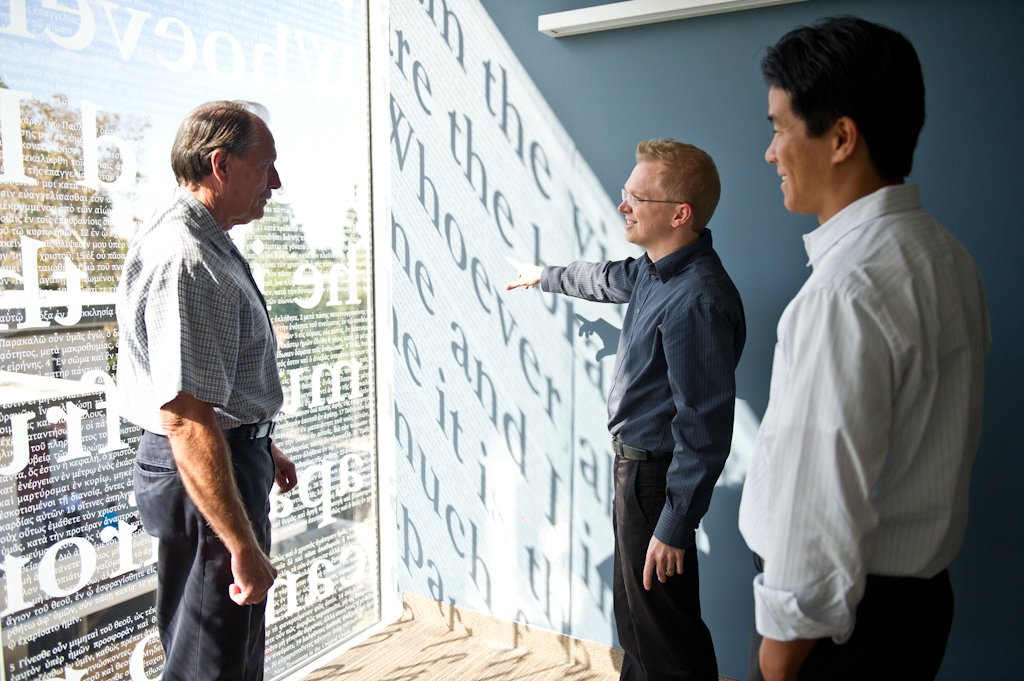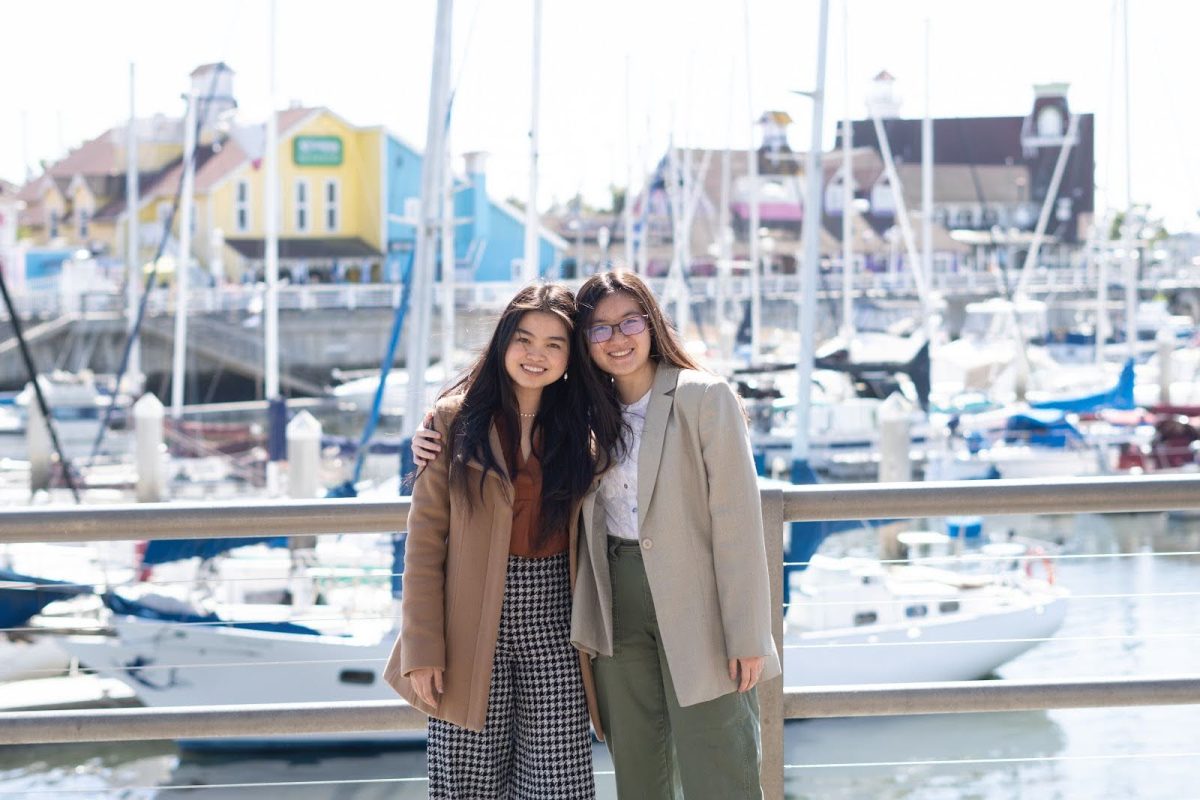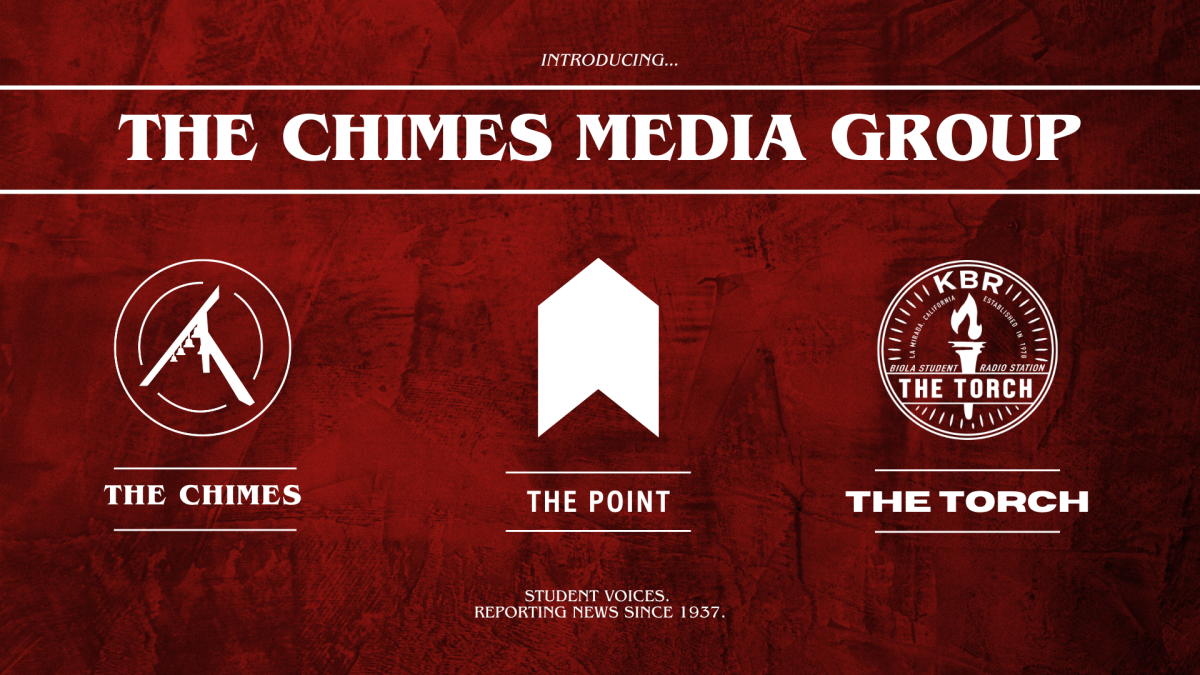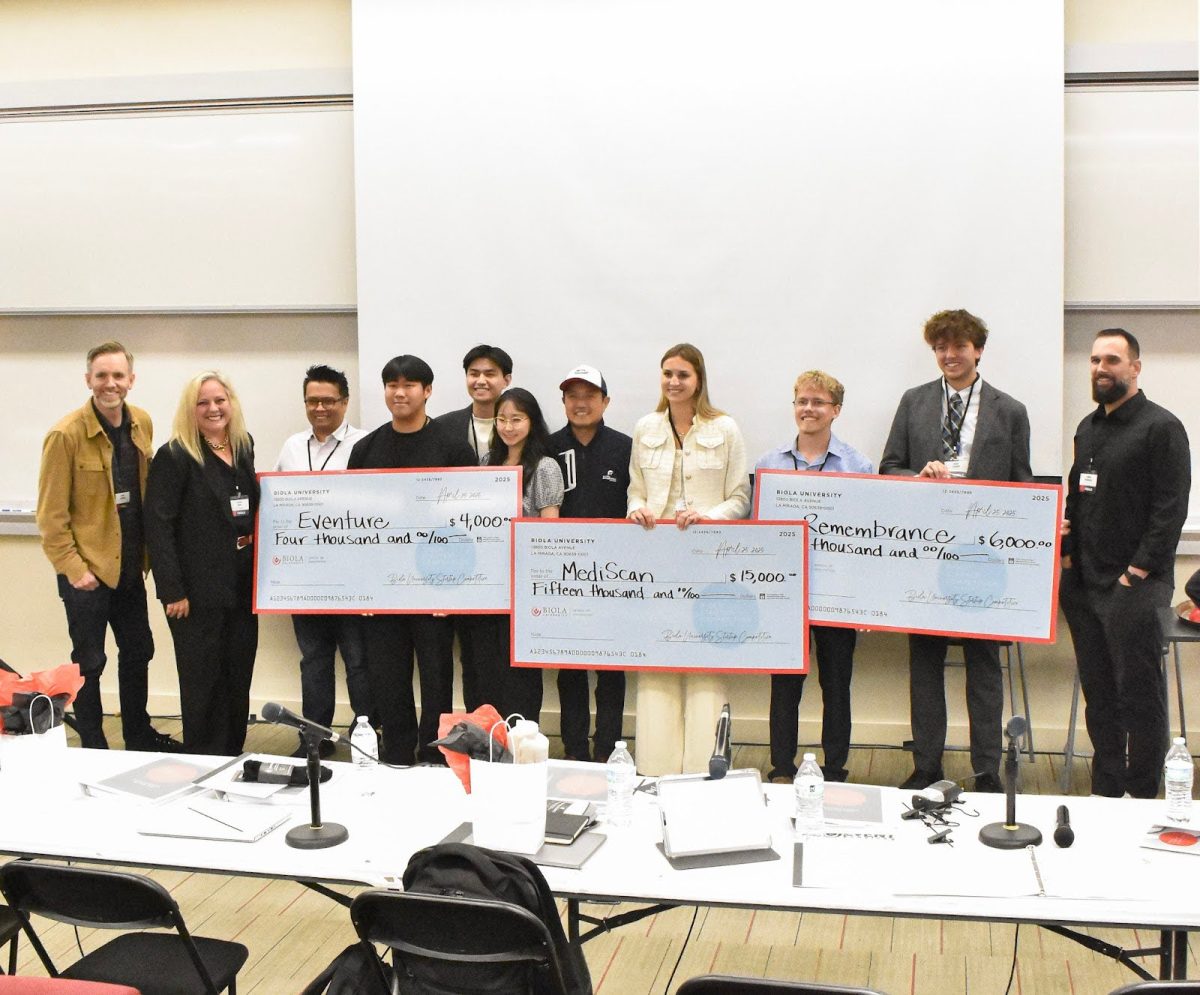
L-R, Jody Spicer (Project Manager), David Herjeczki (Design Director), and Nathan Kim (Senior Associate) discuss the design of the new Talbot building. Biola is “going green” as the new Talbot East building is LEED compliant. | Lauren Kermalis/THE CHIMES
Biola steps up its participation in creation care by seeking its first certification in Leadership in Energy and Environmental Design for the new and nearly completed Talbot building.
Using environmentally friendly products
Some aspects of the new Talbot building would not be there if it weren’t for the LEED certification, said Ken Bascom, senior director of facilities planning and construction. These include major components such as the more efficient air conditioning system and the green roof. Various trees, grasses and sedums cover the majority of the roof and will act as insulation to keep the building cooler and also provide a gutter system that will absorb rainwater. But even things like the carpet, which is composed of recycled material, and the paint, which has a lower fume content, become important environmentally-friendly factors.
“It’s very much a holistic, broad, philosophical approach to building a building,” Bascom said.
Having a greener building has been a part of the plan ever since Barry Corey started as president in 2007, according to Bascom. So, there was a definite philosophy behind Biola’s decision for a LEED-certified building.
“I’m playing the game according to the U.S. Green Building Council rules, but also we’re doing things that would be good creation stewardship decisions,” Bascom said. “I don’t think Biola would have done it if it weren’t for both of those factors.”
Seeking LEED certification
The U.S. Green Building Council developed the LEED program in March 2000. It acts as a rating system that guides building projects in their work. A LEED scorecard is provided and building projects earn points for any of the environmentally-friendly elements they choose to include in the design, construction and operation of the building. The ultimate purpose of LEED is to help reduce the project’s environmental impact and provide a healthier atmosphere for those who will eventually occupy the building.
The campaign for the LEED certification has cost Biola more than $100,000 because of the process of bringing in qualified inspectors and using LEED-certified companies. The actual certification won’t be granted until the building has been occupied for three to six months, but Bascom said that in the long run, the school will earn most of that sum back because of the conservative nature of the building’s systems in light of rising energy costs.
Brian Phillips, senior director of facilities services, will be dealing with the maintenance and operations of the new building. Phillips has already incorporated the use of green cleaning supplies. He also makes sure the janitorial paper in custodial services is recycled throughout the campus and will use the same techniques in the Talbot building.
“That’s where the industry is going,” Phillips said. “To not do these things is kind of like going upstream.”
Making creation care a priority
Many universities are putting LEED construction to use in their building projects. On the U.S. Green Building Council’s website many of the buildings listed in the LEED-certified project directory are on college campuses all across the country. In fact 440 of the 8,850 certified buildings on the list are university buildings and range from residence halls to offices. However, they are virtually all secular schools like the University of California in Irvine and Harvard University.
Mark McReynolds, assistant professor of environmental science, says he’s lived through a shift in the church’s attitude about environmentalism from no interest to deciding it was an issue they should become interested in. Recently, Biola has started moving strongly in that direction with the establishment of the environmental science major and now with its first LEED certification.
“It totally makes sense for Christians to be at the front end of environmentalism or creation care,” McReynolds said. “If we really believe in it, then we should be doing it.”
Sophomore biblical studies major Alina Morrill also sees creation care as a biblical mandate.
“Our God-given purpose is to be stewards of the earth,” Morrill said. “So it’s good for us to have an eco-friendly building.”
Ultimately, the main purpose of the LEED certification remains a spiritual issue for Biola more than anything else.
“If you add in that the layer of believing God put us in this earth to be good stewards of it, then it really transcends politics and it transcends whether you believe global warming is man created or not,” Bascom said. “If you just say, ‘Hey, God expects us to wisely use the resources he gave us,’ then it doesn’t matter if you agree with Al Gore or not. It’s something you do because it’s the right thing to do.”







